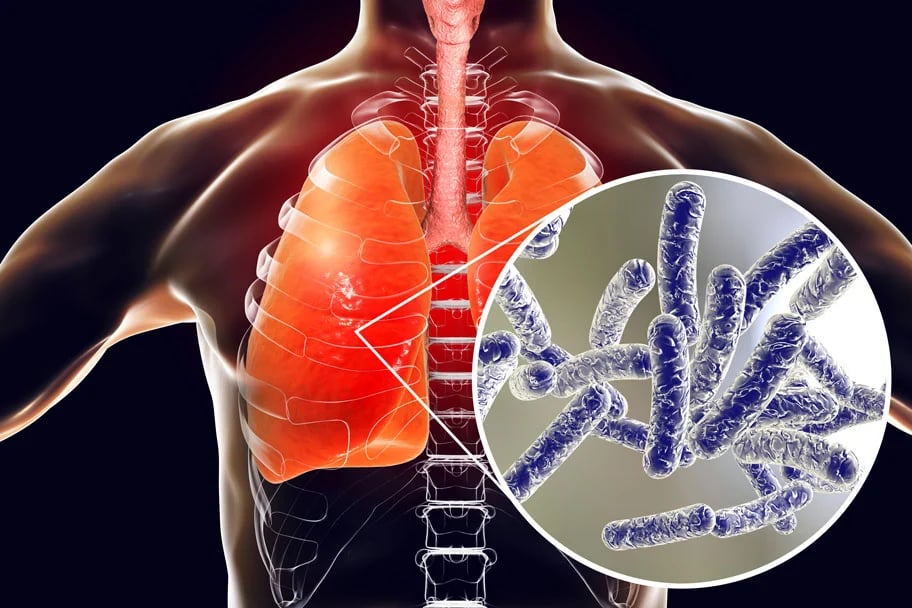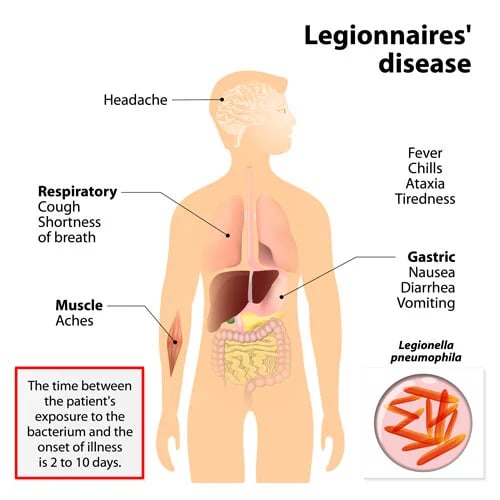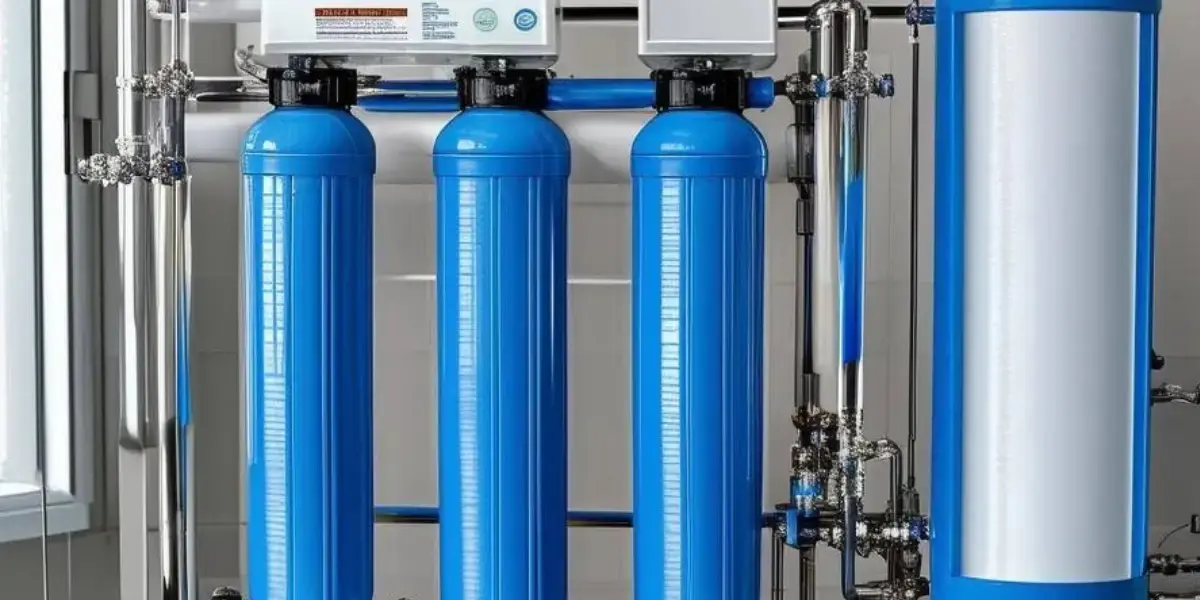Legionella Risk Assessment: everything you need to know
Summary
Conducting a Legionella Risk Assessment (LRA) is a legal requirement under the Health and Safety at Work Act 1974, and building managers have a duty of care to the people in their buildings. An LRA should be conducted by a person who has the competence and authority to undertake physical and administrative checks. Engaging the right water hygiene specialist will help ensure compliance and you will receive practical advice on how to minimise the chance of someone in your building contracting potentially fatal Legionnaires’ disease.
Where can Legionella bacteria grow?
Legionella bacteria live in natural water sources such as lakes, reservoirs, rivers and streams. However, they can also be found in artificial water systems such as hot and cold water systems, cooling towers, and spas.
Given the right combination of environmental conditions, any natural or man-made water system has the potential to become a breeding ground for Legionella growth.
The health risks associated with Legionella bacteria are significantly heightened in areas where water is stored or recirculated and where breathable water droplets are possibly spread in the form of aerosols.

What conditions promote the growth of Legionella bacteria?
- Temperatures between 20-45°C (77°F–113°F)
- Places where there is a ready source of nutrients (sludge, organic matter, algae, scale, rust, etc.)
- Bio-film on water surfaces
- Poor water management and no training and awareness programmes
What external factors can help Legionella bacteria grow?
- Water stagnation
- Water temperature
- Changes in municipal water quality
- Water temperature fluctuations
- Scale and sediment
- pH fluctuations
- Inadequate levels of disinfectant
- Construction
What is Legionnaire’s disease?
Legionnaires’ disease is a severe form of pneumonia, an infection that causes inflammation of the small air sacs in the lungs (alveoli) and their associated tissues.

If humans breathe in aerosols containing Legionella bacteria, they may contract Legionnaire’s disease. Water droplets—wherever water is warm, and a spray is produced—can then make their way via aspiration into the lungs, which then become infected.
The disease is severe and potentially fatal; it is hazardous to at-risk groups such as people suffering from chronic diseases, diabetics, and those with weakened immune systems. Severe complications from the disease can include respiratory failure, shock, and acute renal and multi-organ failure.
When should you conduct a Legionella Risk Assessment (LRA)?
If you are a building manager, a landlord, or an employer, it is imperative you understand the health risks associated with Legionella and carry out a Legionella risk assessment.
The old “industry standard” was for a Legionella risk assessment to be recommended at least every two years. However, the Approved Code of Practice L8 (ACoP L8) advises that arrangements should be made to review the LRA, “when there is reason to suspect it is no longer valid”, so the assessment should always be up to date
This is particularly relevant when building occupants are categorised as high-risk (the elderly, for example), an assessment may need to be carried out even more regularly.
It is important to carry out an LRA whenever there is a change:
- A change in use of the building where the specific water system is located
- A change in the water system itself
- A change of key personnel within the company
- A change from the building being unoccupied to occupied
- An update in relevant legislation
- When there has been a reported case of Legionnaires' disease
What is involved in a Legionella risk assessment?
A Legionella Risk Assessment will include reviewing your current records and a check of your previous assessments to ensure that all recommendations of remedial work or maintenance have been acted upon.
A Legionella risk assessment should be a two-pronged process. There should be a physical inspection and a consultation with everyone involved in controlling the bacteria, including the verification of management procedures and paperwork.
The first part of the Legionella risk assessment will include reviewing your current records and a check of your previous assessments to ensure that all recommendations of remedial work or maintenance have been acted upon.
The second part of the assessment will involve a tour of the site—with a specific focus on those areas where water is stored or where there is the potential for aerosols to be created.
Based on these findings, a report will then be prepared, including any recommendations for actions that should be carried out to lessen or lower the Legionella risk.
The Legionella risk assessment report should focus on the following six key areas:
- Assessing the risk level of the people in the building: is there anyone on site who is particularly susceptible due to age or health considerations?
- Describing both cold water and hot water systems: are they mains fed, from water storage, or a combination of the two or maybe something different?
- Recording water outlet temperature: water services must be operated at temperatures that inhibit Legionella growth. (This means below 20°C at outlets and where water is stored in cold water systems and above 50°C at the for hot water outlets unless there is a supplementary strategy, such as secondary disinfection in place.)
- Assessing the cold and hot water systems: is the cold water tank accessible, insulated, and tightly covered to prevent vermin or foreign matter from entering?
- Assessing the hot water system: what type of system is it (unvented cylinder, combi-boiler, cylinder fed, etc.), and are the distribution pipes adequately insulated?
- Identifying additional areas of risk: are showers and mixing valves correctly installed and well maintained? Are there any dead legs, redundant, or rarely used pipework on the property that will need to be removed or altered? If areas of the property are left unattended for periods of time, is there a schedule in place to regularly flush water systems?
All remedial works need to be recorded in a logbook and followed up with periodic checks and maintenance.
Who is the Legionella responsible person?
The LRA should be instructed by the Legionella responsible person who should have adequate knowledge and understanding of the water management systems in their building. The responsible person should also have sufficient authority to be able to act upon the findings of the audit. This person must ensure compliance and, ultimately, prevent Legionella bacteria from growing.
If you believe you fit the bill, then you could conduct the LRA yourself. Our free downloadable Legionella risk assessment checklist can help the Legionella responsible person manage their building’s water system and control the spread of Legionella bacteria.
Please note that this checklist is intended as a guide; it is not designed as a technical manual. You should review the Health and Safety Executive’s guidance on Legionella for technical instruction.
While the law doesn’t stipulate that duty holders employ the services of a qualified risk assessment assessor, the ACoP L8 regulations do specify that any person who is appointed to carry out the LRA and implement any control measures and strategies should be “suitably informed, instructed and trained and their suitability assessed” and that they are “properly trained to a level that ensures tasks are carried out in a safe, technically competent manner.”
If you are a landlord with only several private tenants, it may be safe to conduct the LRA yourself as long as you have had suitable training. However, if you are responsible for more complex systems, including cooling towers or commercial water supplies, you should consider contacting an experienced water management consultant to ensure the safety of the people in your building.
What should you expect from a Legionella risk assessment?
The aim of an LRA is to help you identify real risks and provide you with the steps to take to remedy any problems.
Many building managers find it useful for an LRA to include a traffic-light system as this helps prioritise your tasks: A red light could indicate high priority actions that need to be quickly addressed. An amber light could indicate prompt action is recommended within an advised time frame. A green light could indicate non-urgent actions that would help improve your processes.
Selecting the right partner to help keep your building safe is paramount. A water hygiene company that operates as part of a larger group can offer you reassurance and breadth of experience. Hiring external contractors with the right experience and credentials is paramount.
For example, they should be a member of professional organisations such as the Legionella Control Association and the Institution of Occupational Safety and Health, as well as a Health and Safety Accreditation. This ensures your company’s risk assessment and Legionella control procedures will be conducted in an efficient and compliant manner.
What should you expect from a water hygiene specialist?
The Legionella Control Association (LCA) provides some useful guidance in terms of what the building owner or manager should expect from an external water hygiene service provider.
Particular areas to be aware of include:
- The provision of a written agreement that clearly defines the individual responsibilities of both the owner/operator and the service provider.
- The water hygiene company's ability to demonstrate a satisfactory level of competence that is in accordance with the objectives of the LCA Code of Conduct.
- That the service provider is able to provide recommendations that are equal to, or better than, the current guidance documents and Codes of Practice relevant to the water system in question.
- That there are clear lines of communication and reporting between the client and the service provider in the event that any corrective or remedial action needs to be taken.
- That the provider can provide accurate, up-to-date and readily available monitoring and treatment records.
- That there is a clearly established internal auditing process to ensure the service provider's compliance with the LCA Code of Conduct.
- That copies of all current certificates can be made available to all relevant clients on request.
Is it a legal requirement to have a Legionella risk assessment?
All employers, landlords, or premises managers have a duty to understand, and manage, Legionella risk within their workplace and ensure that a Legionella risk assessment (LRA) of all water systems is carried out regularly.
Many operators opt to entrust the task of conducting Legionella risk assessments to an external provider. However, the ultimate responsibility for compliance rests with the owner or operator of the water system, so it is crucial to ensure that this vital work is carried out by a suitably competent water hygiene specialist who can demonstrate compliance with all the relevant codes of conduct.
Legionella risk assessment cost
The size and complexity of the building and its water systems directly relate to the cost of a Legionella risk assessment.
A standard assessment generally costs somewhere in the region of £250, and more complex sites may cost in excess of £2,000.
Conclusion
Carrying out a Legionella risk assessment is a legal obligation, and the building owner or manager has a duty of care to the people in their building. Failure to manage risk correctly can end in prosecution and hefty fines—such as a £3m fine in 2015.
A Legionella risk assessment is a technical evaluation that includes physical and administrative elements. An experienced individual should carry it out with the right credentials to ensure compliance and safety.

Written by Jon Greaves
Jon has progressively worked through operational roles, account management, technical management, and senior management roles over the last 16 years within one of the group companies before moving into the role of Water and Air Managing Director. Jon has experience across multiple sectors of water and air compliance, including district energy networks; data centres; healthcare; food and beverage and facilities management. Jon acted as a corresponding steering committee member on CIBSE CP1 – Heat Networks Code of Practice for the UK released in 2020.





